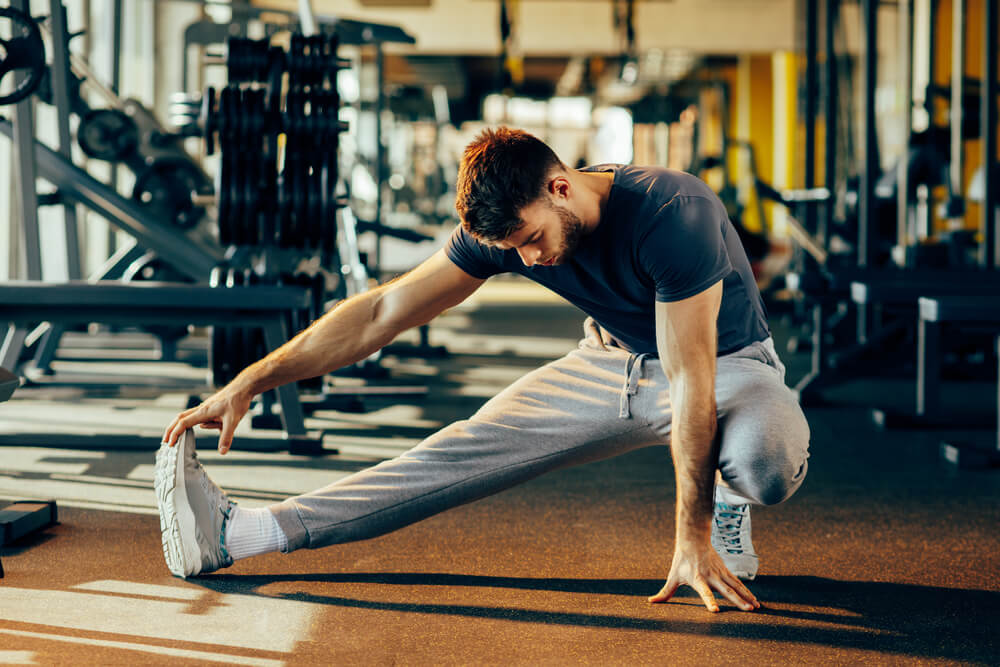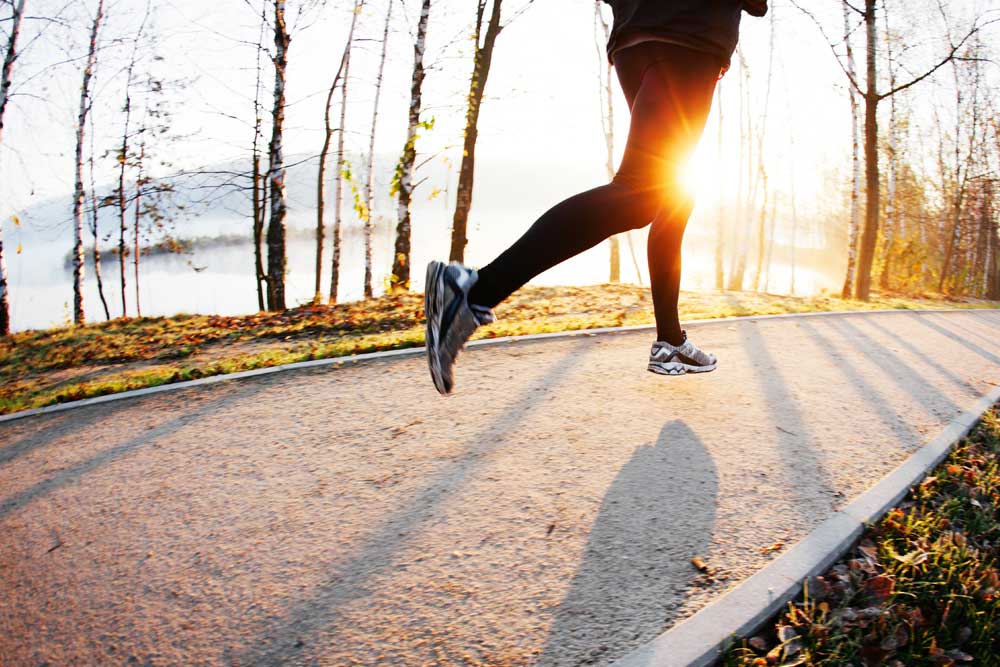
As any seasoned coach, athlete, or reasonable person will tell you: warm-up is the most integral part of any workout. Whether you’re taking it light and breezy, or going full ninja warrior in your workout, there’s no overstating the importance of a proper warm-up.
Even so, many people are guilty of skipping this crucial first step. Warming up gears your mind and body for more rigorous physical activities, which is double important if you largely lead a sedentary lifestyle by sitting for hours on end in your office chair or school desk.
Going for long periods of time without any significant movement causes your muscles to cool and become rigid, which does not make it conducive to executing big actions. When you warm up, you literally heat up your body–increased body temperature loosens muscles, making them supple and pliable, allowing you to stretch further, run faster, lift heavier, and so on.
More importantly, a proper warm-up increases heart and respiratory rates, allowing your blood to circulate more effectively through your body, carrying with it oxygen and other vital nutrients. When your body is all set for action, you significantly reduce any risk of hurting yourself with sudden movement your body was not ready for.
Given all of this, what exactly constitutes a “good” warm-up?
The Perfect Warm-Up
The perfect warm up… does not exist. While there are staple activities you can do for any kind or level of exercise, there is no one, cookie-cutter routine you can apply across the board.
For every kind of exercise, and for every fitness state or level you’re in at the moment of exercise, you also have to tweak your warm-up routine to account for these things. Nonetheless, there are a number of core exercises you can incorporate into your own routine, all while keeping in mind what it is you wish to accomplish, and which part of you needs the most work.

Skip and Stretch
By and large, warming-up constitutes two major movements: skipping and stretching. The former pumps up your heart rate, thereby boosting blood flow and increasing body temperature. The latter targets specific muscles, loosening the stiffness out of them that comes from being inactive for so long. Depending on what kind of workout you’ll be doing, some exercises will work better than others.
Moreover, doing one or the other does not constitute a good warmup—it’s important that you do both skipping and stretching exercises in tandem with each other, not only to really prep your body, but to lessen the risk of hurting yourself.
Aerobic
Aerobic exercises like jogging or skipping rope are staple warm-up activities because they can really get your blood flowing in just a few minutes. Start any workout session with three to five minutes of light, whole body cardio like the abovementioned. To add variations and slightly increase the difficulty of this warm-up, particularly if you have a heavy-duty workout ahead of you, consider these alternatives:
High Knees
Start with both feet firmly planted on the floor, shoulder-width apart. With your posture always straightened, raise one knee as close to your chest as possible, while your other leg bears all your weight. Carefully lower this leg, then raise the opposite knee once you’ve regained your balance. Increase your speed as you get more comfortable. This is a variation on the classic jogging in place, and it significantly raises your heart rate and improves your balance.
Butt Kicks
Another way to spice up a simple run is by tapping your ankle to your buttocks with each leg raise. For this particular exercises, bend your leg backwards until your foot touches your bottom, while balancing on just one leg. Do the same with the opposite foot, and gradually increase speed as you become more comfortable.
Mountain Climbers
This an easy exercise that works out your arms and legs equally. Start by lying flat on the floor, face first, then push yourself up until your arms are fully stretched out and your palms are flat on the ground. Straighten your legs until only your toes are supporting you, as in a push-up. Once you’ve stabilized yourself, bring one knee up to your chest then slowly stretch it back out. Do the same with the opposite leg, and increase your speed until the moving leg no longer touches the floor.

Stretches
If you’ve ever hit the gym (like Australia’s very own Rec Xpress), joined a sporting event, or simply seen a person about to exercise, chances are you’ve seen them bust out a few stretch. There’s also a good chance, however, that that is all you see them do by way of warm-up.
Many people make the mistake of thinking a few tugs on your hamstrings, or a little arm-pulling action, is enough to prep your body for a 10km run or a 50kg weightlifting, but as we’ve mentioned above, this is woefully not the case. In fact, while stretching your muscles helps keep you from pulling them, stretching as an exercise is actually done best as a post-workout cool down routine, when your muscles are warm and pliable, and in perfect condition to develop a wider range of motion.
Well-warmed muscles have high plasticity, meaning that they can stretch further than usual, and they can retain those stretched range of movements even after cooling down, thereby increasing your flexibility.
As a warm-up, take care not to overdo your stretches. The goal is only to loosen your muscles further and get rid of kinks from being physically inactive for a while. For this reason, a dynamic, rather than static, stretch is better for a warm-up exercise because these don’t hold a stretch for prolonged periods of time, but only go through the motions quickly but seamlessly. Below are a few simple stretches you can incorporate into your workout:
Trunk-Twist Stretch
Lie flat on a floor mat and extend your arms outwards, keeping them at shoulder-level. Extend your legs at a 90-degree angle, then slowly twist your torso to align your legs as close to an arm as possible. Hold the position for a few seconds, then slowly move to the opposite side. Do this for two to three minutes.
Deep Lunges
This is a great stretch for strength-building workouts like weightlifting. Variations can include hip circles, where you go into a deep lunge, place your palms on the floor in front of you then circle the front knee to rotate the hip as well. Another variation is a thoracic rotation, where you start by reaching the floor with an elbow, then rotating your torso and stretching the same arm out upward, holding the position for a beat before moving to the opposite side. This variation works out the spine, loosening it for rotation-heavy exercises.
Warm-ups are the most crucial part of any workout. They prime your body for more intense actions, they loosen your muscles so you don’t cramp or strain them, and they pump your heart beat so blood can flow through your limbs properly. Before any workout, remember first to skip and stretch: do aerobic exercises to get the blood flowing, like high knees, butt kicks, or mountain climbers, then follow it up with dynamic stretches to loosen your muscles, like a good trunk-twist stretch, or deep lunges. Always warm-up for at least five to ten minutes, and don’t forget to cool down similarly after the workout.
For more great tips check out an article we were featured in for the best at home cardio exercises to do at home.
Rec Xpress is a 24/7 gym with a weekly membership fee of just $11. Fully furnished with top-of-the-line fitness equipment, highly-skilled trainers, and a competent and friendly staff intent on seeing you succeed in all your fitness goals, Rec Xpress has gyms in Clayton, Ormond, Bentleigh, Brighton East and Oakleigh. No lock-in contracts or transaction fees—just an unwavering commitment to health and fitness.

